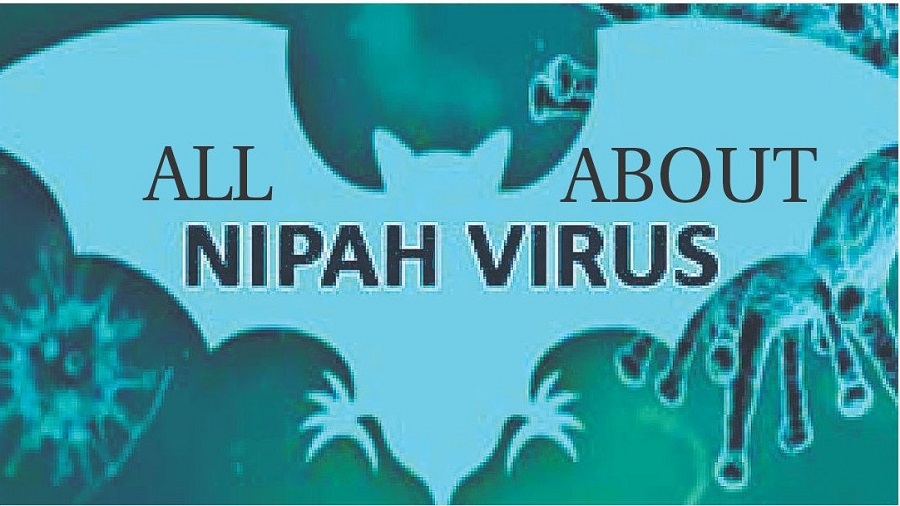ALL ABOUT NIPAH VIRUS
| Date :10-Jun-2019 |

Nipah virus (NiV) infection is a newly emerging zoonosis. NiV affects both humans and animals. The fatality rateofNiVisquitehighandspreads mainly through bats, pigs, and other animals. The deadly brain-damaging Nipah virus has resurfaced in tKerala a year after it killed 17 people, state health minister said. A 23-year-old student tested positive for the virus, which is transmitted to humans through direct contact with infected bats, pigsorotherpeople.KeralaHealth MinisterKK Shailajatoldreporters that four other people had Nipahlike symptoms. Another 80 people were being monitored, including some who were in close contact with the student.Shailaja said isolation wards had been set up across the state, where 19 cases were reported last year. Nipah virus (NiV) infection is a newly emerging zoonosis.
NiV affects both humans and animals. The fatalityrate of NiVis quite high and spreads mainly through bats, pigs, and other animals.Fruit bats of the Pteropodidae Family, Pteropus genus are the national reservoir of this virus. The first case of Niv was identified during an outbreak in KampungS ungai Nipah, Malaysia in 1998.NiV got the name from the place where it was first identified. According to the US Centers for Disease Control and Prevention (CDC), 265 patients were infected with the virus during the Nipah virus disease outbreak in 1998-99. About40percentofthosepatients who entered hospitals with the serious nervous disease died from the illness, it says. NiV can be deadly for humans as it causes asymptomatic infection, acute respiratory syndrome, and fatal encephalitis.
1. Symptoms of Nipah AccordingtotheCDC,thesymptoms of NiV infection can be seen after 5 to 14 days of the incubation period.The virus causes 3-14 days of fever and headache, followed by drowsiness, disorientation and mental confusion.In certain cases, within 24-48 hours, these signs and symptoms can progress to coma. Some patients have a respiratory illness during the early part of their infections, and half of the patients showing severe neurological signs showed also pulmonary signs, CDC says.
2.Earlydiagnosisandtreatment are essential Virus isolation attempts and real-time polymerase chain reaction (RT-PCR) from the throat and nasal swabs, cerebrospinal fluid, urine, and blood should be performed in the early stages of disease. Later, antibody detection by ELISA (IgG and IgM) can be used. 3. Treatment Intensive supportive care is the primary treatment in human cases. As Nipah virus encephalitis can be transferred from the affected to other people, standard infection control practices and proper barriernursing techniquesareimportant in preventing infections. The drug ribavirin has been shown to be effective against the viruses in vitro, but human investigations to date have been inconclusive and the clinical usefulness of ribavirin remains uncertain, according to CDC.